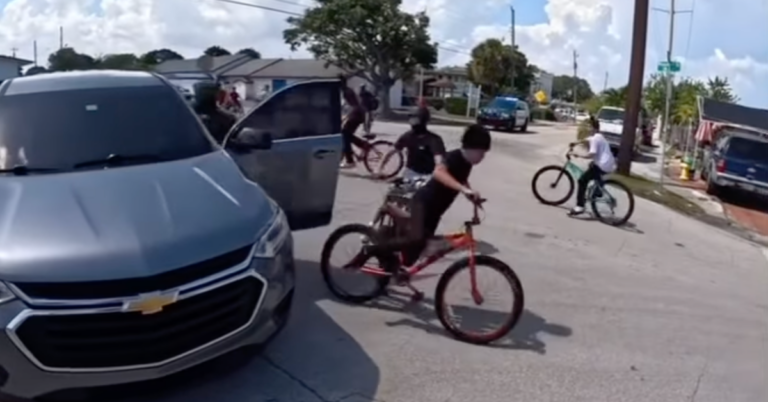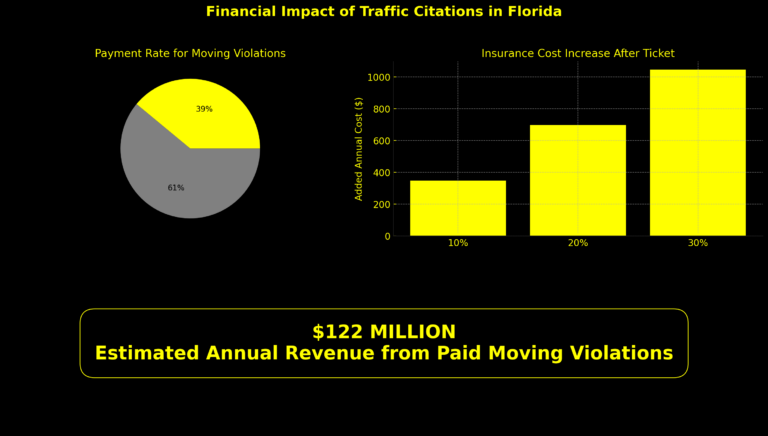Bicycling in Florida offers freedom, exercise, and an efficient way to navigate through city streets and scenic routes alike. However, many cyclists remain unaware that their rights and responsibilities on the road are not all that different from those of motor vehicle drivers. Florida law treats bicycles as vehicles, and failing to understand the legal framework can lead to citations, liability in accidents, or even criminal charges. Below is a detailed, statute-backed overview of what every cyclist in Florida needs to know.

Bicycles Are Legally Considered Vehicles
Under Florida Statute §316.2065(1), a bicycle is defined and treated as a vehicle. This means cyclists have all the rights and are subject to the same duties as any motor vehicle operator, unless a regulation specifically excludes bicycles. Cyclists must stop at red lights, yield where appropriate, use signals when turning, and ride in the direction of traffic. These are not just suggestions—they are enforceable laws that carry penalties when violated.
Helmet Requirements
Florida Statute §316.2065(3)(d) mandates that all bicycle riders and passengers under the age of 16 wear a helmet that is properly fitted, fastened securely, and meets federal safety standards. While adults are not required by law to wear helmets, it is strongly encouraged due to the increased risk of serious head injury in the event of a fall or collision.
Lighting Requirements for Night Riding
This is most likely the most common reason a police officer will stop a cyclist. Visibility is critical for safety, particularly when riding after dark. According to Florida Statute §316.2065(7), any bicycle in use between sunset and sunrise must be equipped with:
- A white front lamp visible from at least 500 feet.
- A red rear lamp or reflector visible from a minimum of 600 feet.
This requirement is strictly enforced, and failure to comply can result in citations. More importantly, it significantly reduces the risk of being struck by a motor vehicle.
Sidewalks and Crosswalk Usage
Florida law does allow cyclists to ride on sidewalks, unless a local ordinance prohibits it. As per §316.2065(9) and (10), when riding on a sidewalk or through a crosswalk, cyclists have the same rights and duties as pedestrians. They must yield the right-of-way to pedestrians and provide an audible signal before passing them. Cyclists should always be aware of local laws, as they may vary by municipality.
Road Positioning and Lane Use
Florida Statute §316.2065(5)(a) outlines specific rules regarding where cyclists should position themselves on the roadway. In general, cyclists are expected to ride as far to the right as practicable. However, there are several key exceptions where it is both legal and safer to ride outside the right-most portion of the lane:
- To avoid obstacles, hazards, or unsafe road conditions.
- When preparing for a left turn.
- When overtaking another vehicle.
- When the lane is too narrow to be safely shared with a motor vehicle.
In such cases, cyclists may use the entire lane, and motorists are legally required to pass at a safe distance.
Use of Bike Lanes
While many roads feature designated bike lanes, cyclists are not always required to use them. If a bike lane is available and the cyclist is moving slower than the flow of traffic, they are generally expected to use it. However, they may exit the lane when preparing for a turn, avoiding hazards, or when the bike lane ends. This flexibility is essential for maintaining safe riding conditions.
Riding Two Abreast
Cyclists in Florida are permitted to ride two abreast under Florida Statute §316.2065(6), provided that it does not impede the normal and reasonable flow of traffic. On roadways with bike lanes or wide shoulders, this often poses no issue, but cyclists should revert to single file on narrow roads or when being overtaken by motor vehicles.
Operating a Bicycle Under the Influence
Florida law does allow for a cyclist to be charged with a DUI. The same legal blood alcohol concentration (BAC) limits that apply to motor vehicle drivers also apply to those operating a bicycle on public roadways. This is explicitly addressed in the context of the general DUI statute, §316.193, and applies because a bicycle is considered a vehicle under Florida law. Riding a bicycle while impaired can lead to arrest, fines, and a criminal record.
Electric Bicycle Classifications
Electric bicycles, or e-bikes, are categorized into three classes under Florida law:
- Class 1: Pedal-assist only, motor ceases assistance at 20 mph.
- Class 2: Throttle-assisted with a top speed of 20 mph.
- Class 3: Pedal-assist only, but with motor assistance up to 28 mph.
Each class is subject to different operational rules, particularly regarding where the e-bike can be legally used—bike paths, trails, and sidewalks may have restrictions depending on the e-bike’s class. Riders should verify local ordinances and signage to avoid unintended violations.
When Is It Legal to Ride on the Road?
Cyclists are allowed to use Florida roadways whether or not a bike lane is present, unless signage or local law explicitly prohibits bicycle use. They are not restricted to bike lanes and can legally ride in the traffic lane when appropriate. There is no law requiring cyclists to ride on the sidewalk instead of the road; in fact, in many situations, riding on the road is safer and more predictable to motorists.
Why Bicycle Safety Is a Big Issue In Florida
Florida’s alarming rate of bicycle fatalities has become a pressing concern, with the state leading the nation in cyclist deaths. According to the Florida Department of Highway Safety and Motor Vehicles, an average of 18 bicycle crashes occur daily, underscoring the prevalent dangers cyclists face. In 2023 alone, Florida recorded 227 bicycle fatalities, accounting for 6.72% of all traffic-related deaths in the state. This high incidence of cyclist fatalities has intensified pressure on law enforcement agencies to enhance safety measures and enforce traffic laws more stringently. To make matters worse, some areas are having issues with stunt-riding teens acting recklessly on the streets. Consequently, officers are increasingly vigilant in monitoring cyclist behavior, ensuring compliance with regulations such as helmet usage, proper lighting, and adherence to traffic signals. This proactive enforcement aims to reduce accidents and promote a safer environment for both cyclists and motorists.
Understanding Florida’s bicycle laws is not just a matter of legal compliance—it is about ensuring safety for everyone on the road. Whether you are commuting, exercising, or riding recreationally, following these statutes minimizes risk and reinforces your rights as a legitimate and respected road user. If you are ever unsure about your responsibilities as a cyclist, consulting a traffic attorney or reviewing local ordinances is a prudent step. Knowledge, after all, is as essential as your helmet.



